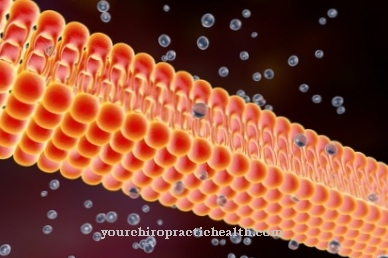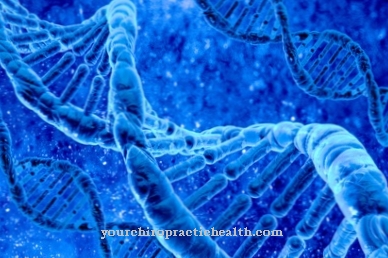Under the Gene transfer refers to the artificial or natural transfer of foreign genetic material to a fertilized egg cell. More precisely, individual genes are transferred from a donor organism to a recipient organism. A distinction is made between horizontal and vertical gene transfer. Gene transfer can take place by transformation, conjugation or transfection. Technical processes are, for example, microinjection or the biolistic method, also known as the “gene gun”.
What is a gene transfer?

Horizontal gene transfer is a process in which genetic material is taken in or passed on without sexual reproductive pathways and regardless of species boundaries. A gene with a certain property is introduced into a genome and activated there. More precisely, this means that genetic material is not transferred along a lineage, while vertical gene transfer takes place through ancestors to offspring.
In the theory of evolution, horizontal gene transfer provides an explanation for the emergence of, for example, microorganisms that are characterized by major leaps in development. From this, in turn, vertical transmission must be differentiated as a special form, whereby pathogens are passed on to another via the genetic make-up of one infected generation.
Horizontal transfer has been proven in microorganisms and invertebrates. For example, genes that are resistant to antibiotics spread among bacteria. In the case of Wolbachia bacteria, on the other hand, an entire genome is smuggled into the cells of a fruit fly, even if only some of the genes later assume certain functions.
Due to the rapid breakdown of tansgenic DNA outside a cell, it is rather unlikely that horizontal gene transfer will occur in the microbiological fauna. Mostly it takes place in the laboratory. The emergence of different resistances and pathogens alone could in turn provide information about a naturally occurring gene transfer.
Such a gene transfer has been proven, for example, in the soil bacterium "Agrobacterium tumefaciens", which has the ability to transfer DNA to plant cells, a process that was first described by Belgian molecular biologists Marc Van Montagu and Jozef Schell in 1983, and at the gram-negative rod bacterium "Bartonella henselae", which is able to transfer DNA into eukaryotic cells via its own transport system.
Vertical gene transfer, in turn, is a cross that occurs in two individuals or plants on a sexual basis, whereby the genes are passed on to the next generations. We are then talking about a transmission along the vertical line of descent.
If, for example, transgenic and non-transgenic plants are crossed, the non-transgenic plants also take up the constructs of the genes. It can also be passed on to chromosomes that have genetic defects.
In the case of microorganisms, the passing on of DNA to offspring is called vertical transmission. This term also describes the transmission of pathogens during pregnancy, the birth process and after birth from the mother to the child. Infectious diseases can occur here, such as rubella or HIV.
Function & task
In genetic engineering, horizontal gene transfer is used to create genetically modified organisms. The procedure includes numerous methods that depend on the change in question, e.g. whether it is a prokaryote or a eukaryote. The former describes living beings that do not have a nucleus. These are, for example, bacteria, more precisely eubacteria and archaebacteria. They are characterized by high biological adaptability and a simple morphology, have no mitochondria, a genome free in the cytoplasm, have a complex extracellular matrix and additional DNA.
Accordingly, eukaryotes are organisms that have a nucleus and develop from starting cells containing nucleus. These in turn can be spores or zygotes. A zygote is a diploid cell that has arisen from egg and sperm cells. Spores are single or multicellular microorganisms with a high resistance to environmental influences.
In prokaryotes, transformation, transduction and conjugation take place; in eukaryotes, transfection. During transduction, an infection with bacteriophages transfers DNA fragments between two bacteria. During conjugation, DNA is transferred from one bacterium to another. Also from donor to recipient across species boundaries. Bacteria that act as donors have the F-factor that makes conjugation possible in the first place. A connection between the bacteria is created by means of a plasma bridge and the donor transfers the plasmid to the recipient. Transformation, in turn, is the uptake of free DNA by bacteria.
Illnesses & ailments
Researchers have now been able to prove that human genetic makeup was not only transferred from one generation to the next via vertical gene transfer, but that humans also took them over from bacteria in the course of evolution. More than a hundred genes from microorganisms entered the human genome via horizontal gene transfer.
The result of the research first caused a stir in 2001, but was still considered controversial. As a more extensive genome database became available as the years progressed, British scientists compared genes from species of fruit flies, primates, various roundworms and humans with the genetic makeup of the microorganisms. The result in humans was 145 genes, which originally come from the world of microbes and also fulfill important tasks, for example they are involved in lipid metabolism or in various immune reactions.
Such a horizontal gene transfer probably occurs at a time when the different species had not yet split up. In contrast, gene transfer in this form has existed to this day in roundworms and fruit flies. How such bacteria were introduced into the human genome has not yet been clarified. One possible explanation is viruses that may have served as a means of transport.
In general, gene transfer can have a positive effect on the health of organisms by making them immune to external susceptibility, but the opposite can also occur, whereby pathogens, as in the case of the HI virus, are passed on to another organism.
























.jpg)



